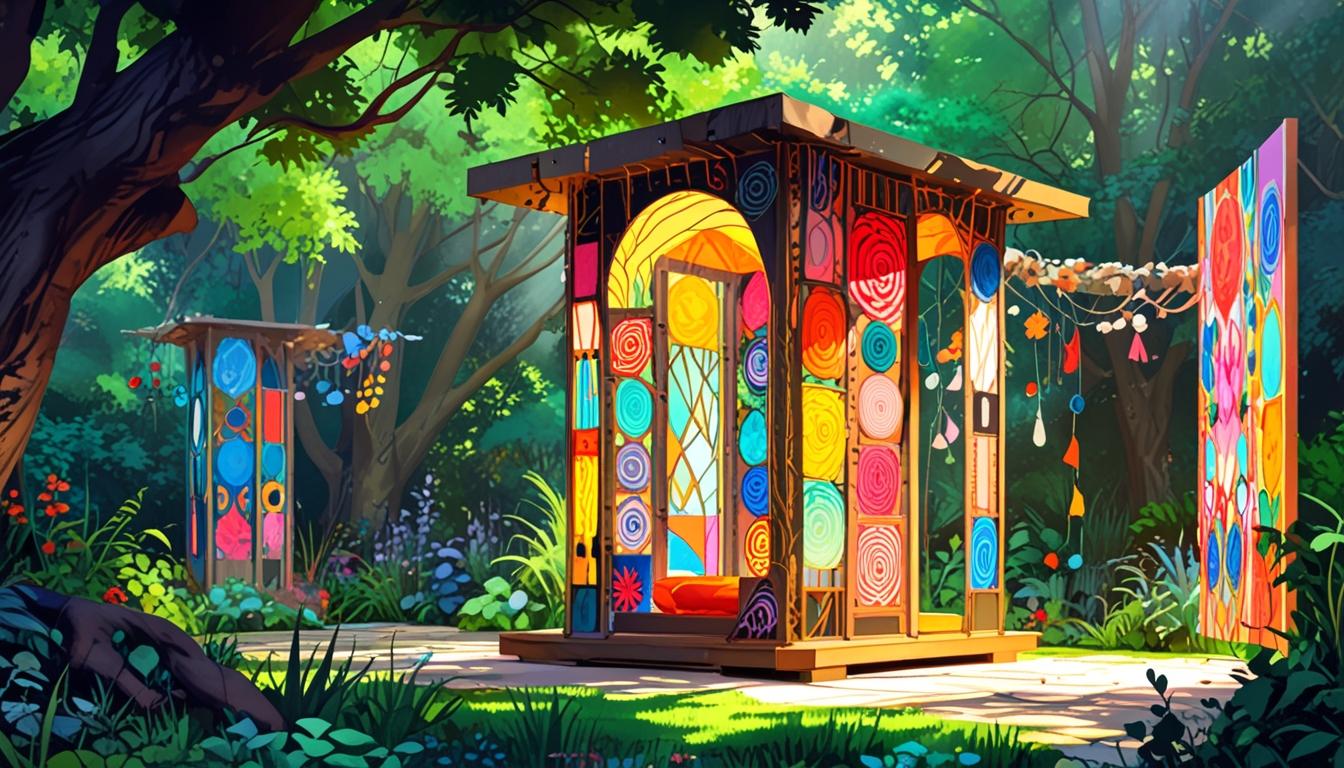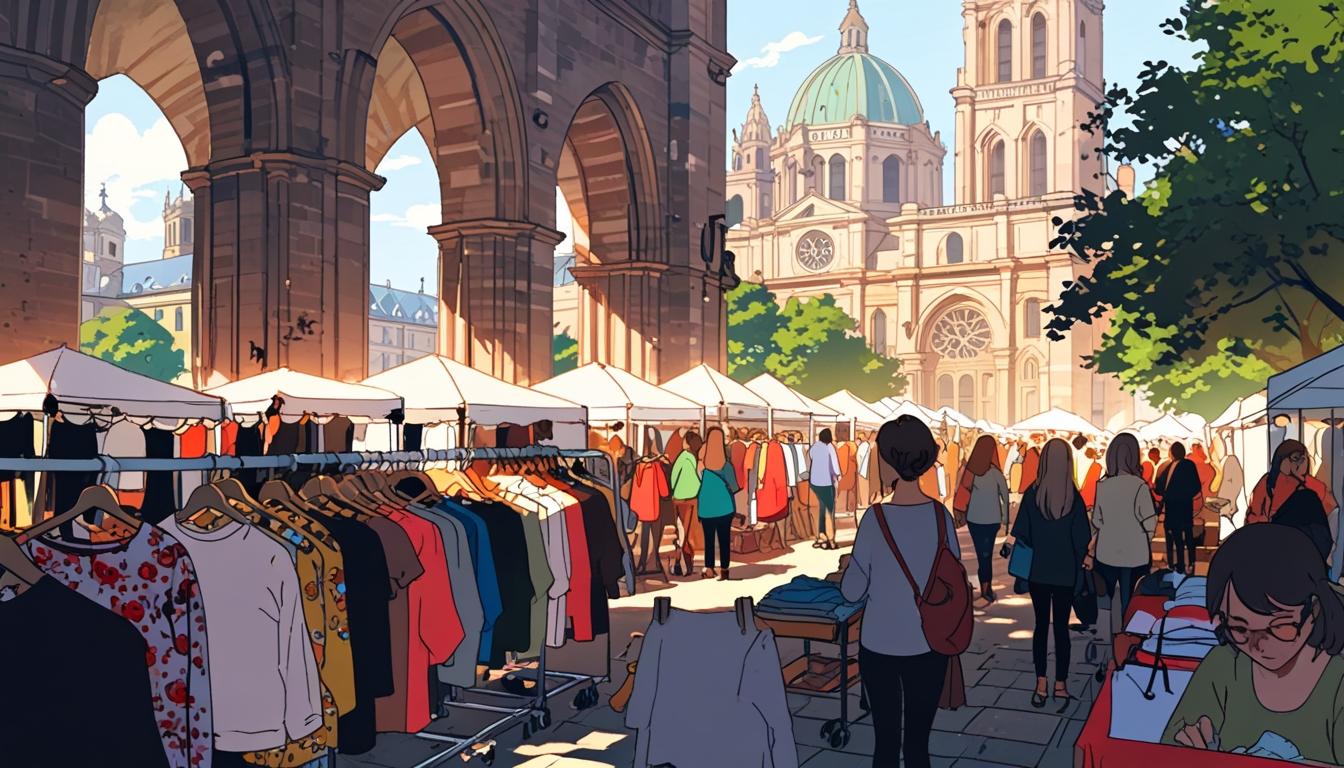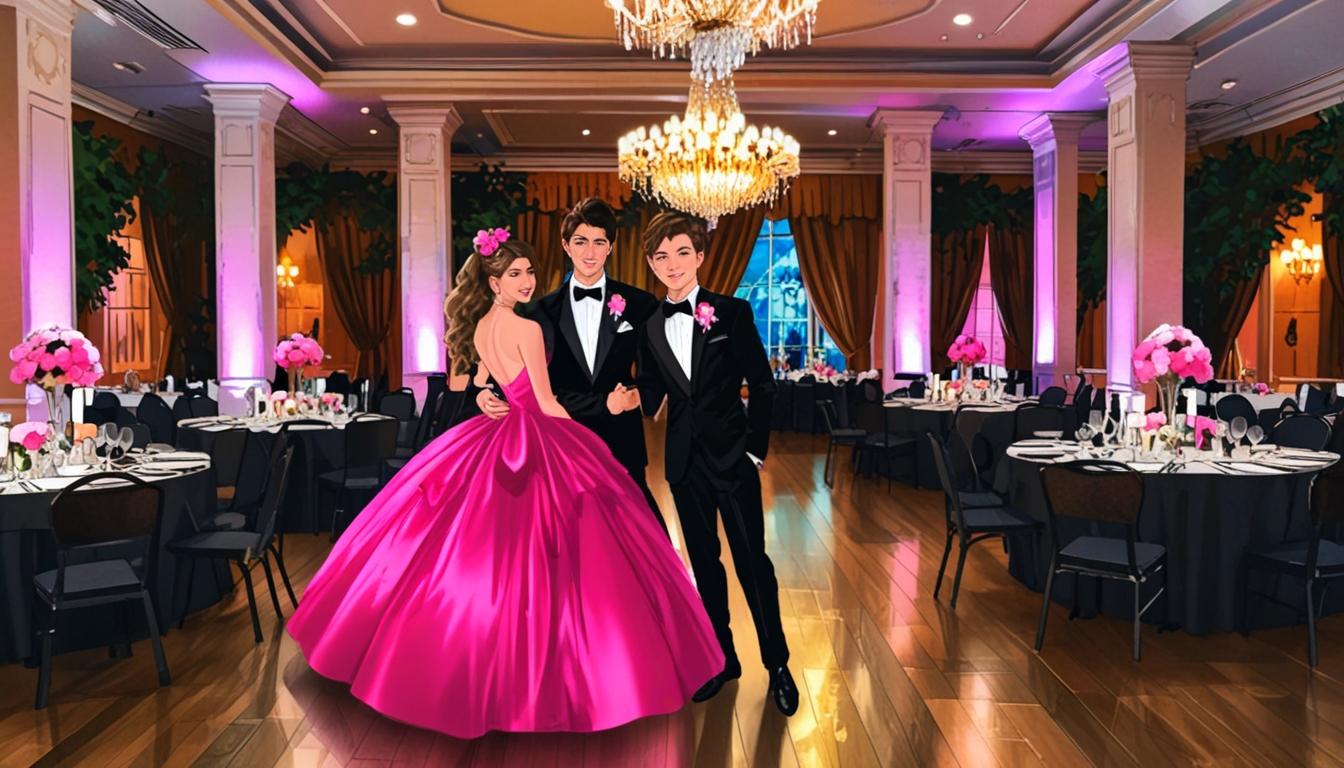Kew Gardens: A new immersive art installation by Sienna Martz titled ‘A Portal Blooms in the Cradle of Night’ invites visitors to explore themes of wonder and sustainability, blending the real with the imaginary through tactile interaction and recycled materials.
A vibrant and immersive art installation titled “A Portal Blooms in the Cradle of Night” has opened at the Royal Botanical Gardens as part of the ‘Of Wonders, Wild and New’ exhibition, which draws inspiration from Lewis Carroll’s “Alice in Wonderland.” Created by fibre artist Sienna Martz, this exhibition invites visitors to engage with a dynamic environment that blurs the line between reality and fantasy while promoting the tenets of sustainability.
The exhibition is curated by Cobalt Connects and encourages artists like Martz to explore themes of wonder and transformation, mirroring the adventures of Alice. Martz’s work is described as a fully immersive experience that not only engages the senses but also fosters a strong connection between visitors, their environment, and the intricate web of life around them. “I wanted this installation to provoke a sense of wonder and exploration while fostering a deep connection between viewers, their surroundings, and the intricate tapestry of life,” Martz said in an interview, expressing her aspiration to create meaningful engagement.
This marks Martz’s first venture into constructing a wholly immersive fibre art installation, making the project particularly significant for her. Designed to be tactile and interactive, it encourages exploration from visitors of all ages, offering a surreal landscape where they can touch and interact with the artwork, further enhanced by an accompanying soundscape.
Martz’s commitment to sustainability is central to the installation’s ethos. She utilises primarily secondhand garments, recycled felt, and organic kapok fibre, with each material chosen for its ecological benefits and the narratives it embodies. “From the beginning, I knew I wanted to work with second-hand garments as, this way, I could embody my dedication to environmental integrity while making a powerful commentary on community and togetherness,” Martz stated. Her choice reflects a challenge against the textile industry’s tendency to generate significant waste, believed to amount to approximately 92 million tons annually.
Her art also brings attention to the vast scale of clothing production. “Knowing that more than 100 billion clothing items are produced each year and there is enough clothing for the next six generations, I believe secondhand clothing is an abundant resource for fibre artists and creatives and should be more embraced,” she remarked. Moreover, Martz has opted for organic kapok fibre instead of synthetic stuffing to further minimise environmental impact and has avoided wool due to ethical concerns surrounding its production.
The installation aims to dissolve the boundaries between the real and the imaginary, inviting visitors into a space that is both enchanting and contemplative. “With its colourful and abstract composition, I want this installation to appear as if it is growing beyond the confines of the exhibition space as if a vividly imagined alternate world is appearing before our very eyes through a magical portal,” Martz explained. She hopes that by engaging with the artwork, visitors will foster a sense of joy, curiosity, and an appreciation for their experiences.
Creating such an expansive and interactive installation poses unique challenges, particularly related to sustainability. Martz has considered the wear and tear that could occur and has devised a strategy to ensure that materials can be reused or recycled effectively in the future. “Within my practice, I always try to consider the waste I produce and how I can responsibly reuse and recycle it,” she noted, detailing her approach to constructing the installation with longevity in mind.
To ensure the artwork remains sustainable, the fabric panels are designed to be both removable and replaceable, thereby prolonging the installation’s life while minimising waste. If materials do become unusable, they will be repurposed into stuffing for future sculptures, illustrating Martz’s proactive approach to waste management.
In summary, “A Portal Blooms in the Cradle of Night” serves as an invitation for visitors to engage deeply with the textures and forms of fibre art. Through its interactive elements, including sound and touch, the installation aims to evoke curiosity and inspire visitors while underscoring sustainable creativity where art, nature, and human experience converge. As the exhibit welcomes its audience, it opens a dialogue on the possibilities inherent in sustainable practices within the realm of art.
Source: Noah Wire Services




